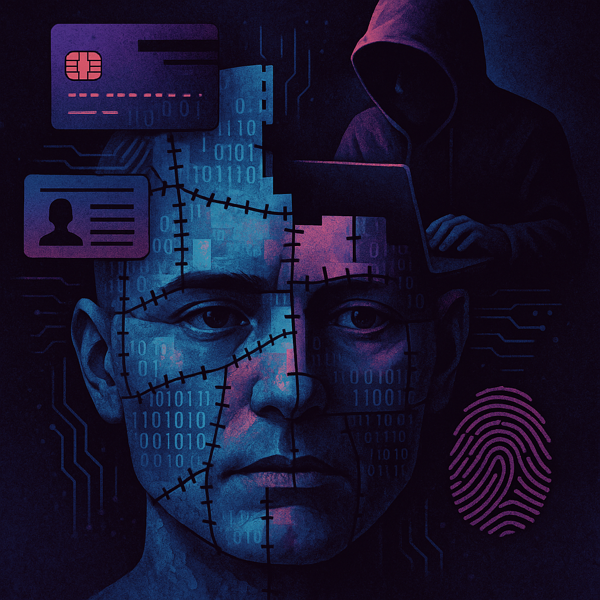Imagine a world where encryption, the bedrock of our current cybersecurity measures, can be unraveled in mere moments. This reality is not just conceivable; it’s on the horizon with the advent of quantum computing. A groundbreaking leap from traditional binary computing, quantum computing has the potential to redefine what we deem secure.
Delving into the peculiar realm of quantum mechanics unleashes power that eclipses the might of our current supercomputers. To truly grasp how this will reshape information security, one must understand qubits and the unfathomable processing capabilities they present. The security protocols we depend on today are poised for a seismic shift as quantum computers become more prevalent.
In this article, we embark on a journey through the landscape of quantum computing and its impending collision with the world of cybersecurity. From exploring quantum-resistant cryptography to pondering the role of agencies in securing data in a post-quantum Era, we will prepare your infosec program to stand firm in the face of this computational tidal wave.
Understanding the Basics of Quantum Computing
Quantum computing signifies a revolutionary leap from classical computers, fundamentally altering the landscape of data processing. The core of this transformation lies in the utilization of quantum bits or qubits. Unlike standard bits, which are confined to a binary state of either 0 or 1, qubits harness the peculiar properties of quantum mechanics. These particles can exist in a state of superposition, being both 0 and 1 simultaneously, which greatly expands their computational capacity.
To maintain their complex states, qubits require an environment that isolates them from any external interference. Achieving this usually involves extreme measures such as cooling systems that approach absolute zero temperatures. This delicate balance is essential to prevent the decoherence and degradation of the qubit’s information.
Another hallmark of quantum computing is entanglement, a phenomenon where qubits become so deeply linked that the state of one will instantaneously influence its entangled partner, regardless of the distance separating them. This interconnection paves the way for unprecedented speed and efficiency in computing processes.
Given the immense computing power quantum machines are expected to yield, they pose a critical concern for information security. Current cryptographic protocols, which rely on the computational difficulty of certain mathematical problems, might become easily solvable in a fraction of the time currently required. Therefore, in anticipation of this quantum threat, governments and institutions like the National Institute of Standards and Technology (NIST) are proactively working on developing and standardizing quantum-resistant cryptographic mechanisms. These intensified efforts aim to buttress our cybersecurity infrastructure against the potential onslaught of quantum attacks that could exploit the vulnerabilities of classical cryptographic systems.
Explaining Quantum Computers
Quantum Computers
|
Feature
|
Description
|
|
Qubits
|
Utilize qubits instead of bits, allowing for simultaneous representation of 0 and 1 through superposition.
|
|
Entanglement
|
A property where qubits are interconnected so that the state of one can instantaneously impact another.
|
|
Encryption Threat
|
Pose danger to current encryption methods due to their ability to solve complex cryptographic problems rapidly.
|
Quantum computers diverge entirely from the operational framework of classical computers. While traditional machines process data linearly, quantum computers leverage the dual state capability of qubits through superposition, allowing them to perform multiple calculations concurrently.
The intrinsic feature of entanglement in quantum computers enables a linked state among qubits, enabling immediate and correlated changes across them. This feature dramatically accelerates complex problem-solving and data analysis processes.
The exponential speed and power of quantum machines offer promising advancements but simultaneously challenge the integrity of cryptographic algorithms, including those protecting internet infrastructure. As quantum computers excel at calculating large numbers efficiently, they could potentially decipher encryption swiftly, rendering many of the security protocols we currently rely on ineffective. This quantum leap requires a reevaluation and reinforcement of encryption to secure data against the potential intrusion by these powerful computing entities.
Discussing Quantum Bits (Qubits)
Quantum bits – or qubits – are the quintessential building blocks of quantum computers. By being able to embody multiple states at once through superposition, they bypass the limitations of classical bits. This property permits an exponential increase in computing power, as each qubit added to the system essentially doubles its capacity.
Entanglement compounds this capability, fostering a network of qubits that synchronize changes over any distance. This drastically enhances efficiency, enabling rapid complex calculations and high-level problem-solving far beyond the scope of traditional computing.
The manipulation of qubits through quantum algorithms, exploiting both superposition and entanglement, allows quantum computers to perform functions in mere moments that would take classical computers years. However, it’s key to note that this power to swiftly navigate through vast computational possibilities not only offers solutions but also necessitates the evolution of cybersecurity measures.
Exploring Quantum Mechanics and Its Relation to Computing
Quantum Mechanics Principles in Computing
- Superposition: Facilitates qubits to be both 0 and 1 concurrently, enabling parallel calculation capabilities.
- Entanglement: Connects qubits, allowing information sharing instantaneously regardless of distance.
- Acceleration: Propels computing processes at an unprecedented pace, opening new possibilities for industries.
Quantum mechanics and computing are intertwined, with the former offering an analytical lens for the latter. By viewing computing through the principles of quantum physics, a vast new computational paradigm emerges. The spoils of quantum mechanics, such as superposition and entanglement, permit the functionality of quantum bits, or qubits, fundamentally differentiating quantum computers from their classical counterparts.
These quantum properties allow for parallel calculations to be conducted simultaneously, something utterly impossible for classical computing architecture. With the formidable capability to expedite solutions and answer monumental questions across varied industries, quantum computing is expected to drive significant progress in the next decade.
However, the same properties that endow quantum computers with their power also render current encryption models, like RSA, profoundly vulnerable. Quantum computers can decipher complex numerical problems in a fraction of the time expected by traditional systems, therefore outpacing and potentially compromising existing cybersecurity measures. Consequently, acknowledging and preparing for quantum impacts on encryption is paramount, ensuring a secure transition into the impending post-quantum world.
The Implications of Quantum Computing on Cybersecurity
Quantum computing heralds a double-edged sword for the digital world; on one side, it promises unprecedented computational breakthroughs, and on the other, it poses a seismic threat to cybersecurity. The very nature of quantum computing, with its ability to solve complex problems that are intractable for classical computers, could undermine encryption methods that protect everything from daily financial transactions to state secrets. Data meant to be safeguarded for an extended period is at risk, as current encryption could eventually be rendered obsolete by quantum techniques.
Recognizing this, efforts to create quantum-resistant encryption are gaining momentum. NIST, among other institutions, is actively seeking post-quantum solutions, having sifted through 69 potential cryptographic methods. The road ahead is a paradigm shift in cybersecurity strategy: to adopt a multi-layered, quantum-safe defense and build an infrastructure resilient to the quantum age. Such a transition demands identifying and protecting critical data assets with diversified cryptographic solutions and contemplating novel, quantum-robust algorithms for enduring security.
As quantum technology advances, organizations must remain vigilant, continuously adapting to new cybersecurity regulations and principles like zero-trust architecture to fortify themselves against future quantum exploits.
Identifying the Quantum Threat to Cryptographic Algorithms
The Cloud Security Alliance forecasts a worrisome horizon for cryptographic algorithms such as RSA, Diffie-Hellman, and Elliptic-Curve Cryptography, indicating their susceptibility to quantum attacks possibly by April 2030. Such a development exposes organizations to ‘harvest now, decrypt later’ scenarios, where adversaries collect encrypted information, waiting to unlock it with mature quantum capabilities.
Notably, over half of the participants in a Deloitte Poll acknowledged this risk, attesting to the widespread concern regarding quantum computing’s impact on cryptography. The crux of this threat is the superior ability of qubits, the core units of quantum computing, to tackle multifaceted problems rapidly. Hence, the urgency to innovate quantum security measures is fundamental, demanding a robust cybersecurity edifice that can withstand advanced future threats.
Assessing the Impact of Powerful Quantum Computers on Current Security Measures
Contemporary cybersecurity rests on encryption algorithms like RSA, which powerful quantum computers could nullify. Post-quantum cryptography (PQC) seeks to mitigate this threat, ensuring our safety protocols are compatible with a quantum future.
The U.S. National Institute of Standards and Technology (NIST) is at the Knowledge cutoff: forefront, assessing 69 methods for such cryptography. Moreover, the ‘harvest now, decrypt later’ dynamic looms as a direct consequence of powerful quantum computing, prompting the necessity for quantum-safe countermeasures, without which industries face considerable security risks.
Recognizing the Challenges of Key Distribution in a Post-Quantum World
With the prospect of quantum computing, the secure distribution of cryptographic keys becomes ever more crucial, yet challenging. The landscape beyond the coming decade needs to account for quantum threats; organizations must ensure continued data safety while raising awareness among leaders and stakeholders.
Strategies like crypto agility are crucial, providing the flexibility necessary to transition between algorithms in response to emerging vulnerabilities or quantum threats. Additionally, the integration of traditional and quantum-driven security methods or technologies like Quantum Key Distribution could bolster our cryptographic defenses in this new computational era.
Analyzing the Implications for Crypto Agility in the Face of Quantum Attacks
The ascent of quantum computing casts a foreboding shadow over established encryption methods such as RSA and ECC. Algorithms conceived for quantum machines, like Shor’s and Grover’s, are primed to factorize large numbers expeditiously, undermining the foundations of conventional cryptographic security.
Post-quantum cryptography is the beacon of hope, looking at alternatives like lattice-based cryptography founded on the intricacies of lattice mathematics for quantum-resistant encryption methods. With 50.2% of respondents in a Deloitte Poll voicing concern over ‘harvest now, decrypt later’ threats, the imperative for crypto agility has never been clearer. Making a preemptive pivot towards quantum-resistant solutions is both a strategic and necessary stance to counter the coming quantum onslaught.
Quantum Technologies and their Potential Impact on Infosec Programs
Quantum computing represents a transformative force across sectors, boasting the ability to accelerate problem-solving capabilities to levels unattainable by classical systems. Within the sphere of cybersecurity, this computing paradigm foreshadows profound repercussions. Existing security protocols could falter as advanced computational techniques emerge, rendering them inadequate against quantum-powered attacks.
To hedge against this prospective quantum revolution, organizations are hastily directing focus toward post-quantum cryptography (PQC). This advanced subset of cryptographic algorithms is designed to be quantum-resistant, ensuring the protection of sensitive data even against adversaries wielding quantum tools. In a proactive move, NIST has earmarked four quantum-resistant encryption methods, setting the stage for a fortified cybersecurity infrastructure in the impending era of quantum computing.
Another trailblazing quantum technology is Quantum Key Distribution (QKD). QKD exemplifies a formidable approach to escalated security, exploiting the quirks of quantum physics to enable impenetrable key distribution, safeguarding against even the most sophisticated eavesdropping endeavors. As such, the confluence of PQC and QKD marks a pivotal junction in the roadmap for future infosec programs that need to anticipate the universal challenges posed by quantum technologies.
Examining the Role of Quantum Computing in Artificial Intelligence and Machine Learning
The symbiosis of quantum computing and artificial intelligence (AI) promises an era where data is dissected with unparalleled precision. Quantum machine-learning could significantly enhance AI algorithms, sharpening the detection of evolving cyber threats. Thanks to the deftness of quantum computers in sifting through extensive datasets, quantum advantage could lead to more astute and efficient pattern recognition, empowering real-time threat detection, and proactive response systems.
Furthermore, the nascent realm of quantum computing stands to revolutionize network security through its prowess in dissecting complex networks, uncovering latent vulnerabilities, and buttressing cybersecurity frameworks against imminent threats. The precipitous growth of quantum-informed algorithms suggests a future where AI and machine learning not only accelerate but also achieve greater energy efficiency in warding off novel cyber risks.
One cannot ignore, however, the demands such developments place on human capital. Quantum computing necessitates a cadre of skilled professionals, ushering in an educational imperative to train and cultivate expertise in this avant-garde technology.
Exploring the Integration of Quantum Technologies into Traditional Computers
In the advent of a hybridized technology ecosystem, quantum computers are poised to take on the mantle of specialized co-processors, alongside their classical counterparts. Such arrangements would enable classical systems to offload computationally intense tasks, particularly those well-suited to quantum’s nuanced problem-solving capabilities. Yet, this marriage of digital methodologies is not without its pitfalls.
Integrating quantum and classical systems may inadvertently create conduits for established cybersecurity threats to infiltrate quantum realms. The anticipated arrival of standardized quantum algorithms within the next several years provides some assurance, although the perpetual evolution of quantum computing techniques may challenge such uniformity.
Taking center stage in the convergence of quantum and traditional computing is the Quantum Key Distribution (QKD), an encryption method that leverages quantum physics to deliver keys with guaranteed secrecy. Despite these innovative strides, vulnerabilities highlighted by quantum factorization methods, like Peter Shor’s notorious algorithm, forecast potential threats, especially to cornerstone encryption protocols such as RSA.
Evaluating the Processing Power of Quantum Computers and its Effect on Cybersecurity
Quantum computing’s extraordinary processing power is derived from quantum bits, or qubits, which operate in a rich tapestry of states beyond the binary confines of classical bits. This quantum capability enables the performance of calculations at a pace and complexity that is exponential compared to traditional computing power. The crux of the matter for cybersecurity is the implications this has on encryption, as quantum computers can potentially break encryptions that classical computers would never feasibly solve.
The burgeoning presence of quantum computing introduces a myriad of challenges, not least the financial and accessibility barriers for smaller organizations. As advancements in quantum computing gain momentum, the cybersecurity landscape will need to adapt to an ever-evolving set of challenges, requiring vigilant monitoring and nimble responses.
To keep apace with the dynamic growth of quantum computing, a collaborative trinity of industry, academia, and government is imperative. Together, these stakeholders are the keystone in the archway leading to new cryptographic defenses, ensuring the enduring confidentiality and integrity of private information amidst the quantum computing revolution.
Strategies for Adapting Infosec Programs to the Quantum Computing Era
As quantum computing continues to develop, its potential impact on cybersecurity grows exponentially. Infosec programs, therefore, must evolve with the emerging quantum threat. Here are key strategies for ensuring that security frameworks remain robust and agile in the face of quantum advancements:
- Evaluating Post-Quantum Cryptography (PQC): Proactively assess and integrate NIST-approved PQC algorithms into existing security protocols to ensure data remains secure against quantum computers.
- Employing Quantum Key Distribution (QKD): Consider the practicality and benefits of QKD for safeguarding critical communications against quantum spying techniques.
- Practicing Quantum-Secure Governance: Develop and instill governance principles that specifically address the unique considerations of quantum technologies to establish trust and mitigate risks.
- Prioritizing Data Protection: Identify and categorize the sensitivity of organizational data to strategize encryption overlays and safeguard valuable assets.
- Implementing Crypto Agility: Embrace a comprehensive risk assessment approach that prioritizes the swift adoption of quantum-resistant mechanisms and allows for quick adaptation to new cryptographic standards.
Developing Quantum-Resistant Cryptographic Algorithms
In anticipation of quantum computing’s potential to disrupt current cryptographic models, the development of quantum-resistant algorithms is critical. Lattice-based, code-based, multivariate, hash-based, and isogeny-based cryptography exemplify such pioneering approaches. These algorithms aim to withstand the computational supremacy of quantum mechanics. However, this futuristic cryptography frontier presents unique challenges, including the steep curve in development, adoption, and the required coordination among global stakeholders to achieve homogeneity in protection measures.
Implementing Quantum-Safe Key Distribution Mechanisms
The secure exchange of encryption keys is fundamental to confidential communication. Quantum key distribution (QKD) emerges as a cutting-edge mechanism, utilizing quantum states to thwart eavesdropping attempts detectably. Integrating QKD entails specialized infrastructure, such as high-quality fiber optics, and embodies the principle of forward secrecy. By leveraging the peculiar characteristics of photons during transmission, QKD introduces an inherently secure method of key exchange, bolstering defenses against both current and potential future quantum interceptions.
Enhancing Post-Quantum Crypto Agility
Crypto agility is paramount for organizations navigating the transition to post-quantum cryptography (PQC). Forward-thinking entities are recognizing the necessity of adopting NIST’s identified PQC algorithms as part of their cyber-defense arsenal. With an estimated 5 to 10-year window for full implementation, the race is on to redesign infrastructure with quantum-resistant measures. Achieving this elastic state of post-quantum crypto agility will ensure that organizations can seamlessly evolve alongside emerging cryptographic standards, mitigating quantum-related threats.
Leveraging Quantum Technologies for Enhanced Security Measures
The integration of quantum technologies offers a vanguard in security measures. Utilizing quantum random number generators lays the foundation for constructing encryption keys grounded in the incontrovertibility of physical laws, delivering unprecedented guarantees. Innovations such as the Quantum Origin platform are fostering stronger cryptographic resilience. Major tech players—eyeing the transformative trajectory of quantum computing—are already providing quantum capabilities through cloud services, underscoring the urgency for organizations to harness these emerging technologies to fortify their cybersecurity posture against quantum-scale threats.
Summary
- Quantum Mechanics Leap: Quantum computers leverage quantum mechanics, outperforming traditional computers in certain tasks.
- Superior Processing: They offer unprecedented computational power, solving complex problems efficiently.
- Cryptographic Algorithms Crisis: Current cryptographic algorithms may become vulnerable to quantum attacks.
- Quantify the Quantum Threat: Assessing the quantum threat is essential for future-proof cybersecurity strategies.
- Post-Quantum Cryptography Need: Development of quantum-resistant encryption methods is crucial.
- Quantum Bits Revolution: Utilizing quantum bits (qubits) fundamentally changes data processing and security.
- Crypto Agility is Paramount: Organizations must adapt to crypto agility to respond to quantum threats swiftly.
- Key Distribution Redefined: Quantum key distribution promises enhanced security in the quantum era.
- National Security Implications: Government agencies are deeply invested due to implications for national security.
- Global Race for Quantum Supremacy: Powers vie for control over quantum computing’s immense potential.
|
Implication Aspect
|
Traditional computing
|
Quantum Computing
|
|
Computational Speed
|
Limited processing power
|
Exponential capabilities
|
|
Encryption
|
Currently secure
|
Potentially vulnerable
|
|
Security Focus
|
Crypto stability
|
Crypto agility
|
|
National Security
|
Important concern
|
Top priority
|
In summary, the rise of quantum computing presents both an opportunity and a formidable challenge for cybersecurity, necessitating the development of robust post-quantum cryptography and strategic adaptation across global industries.
* AI tools were used as a research assistant for this content.







